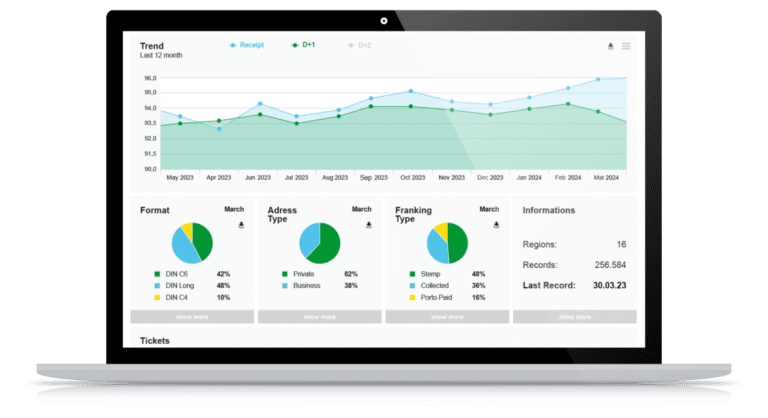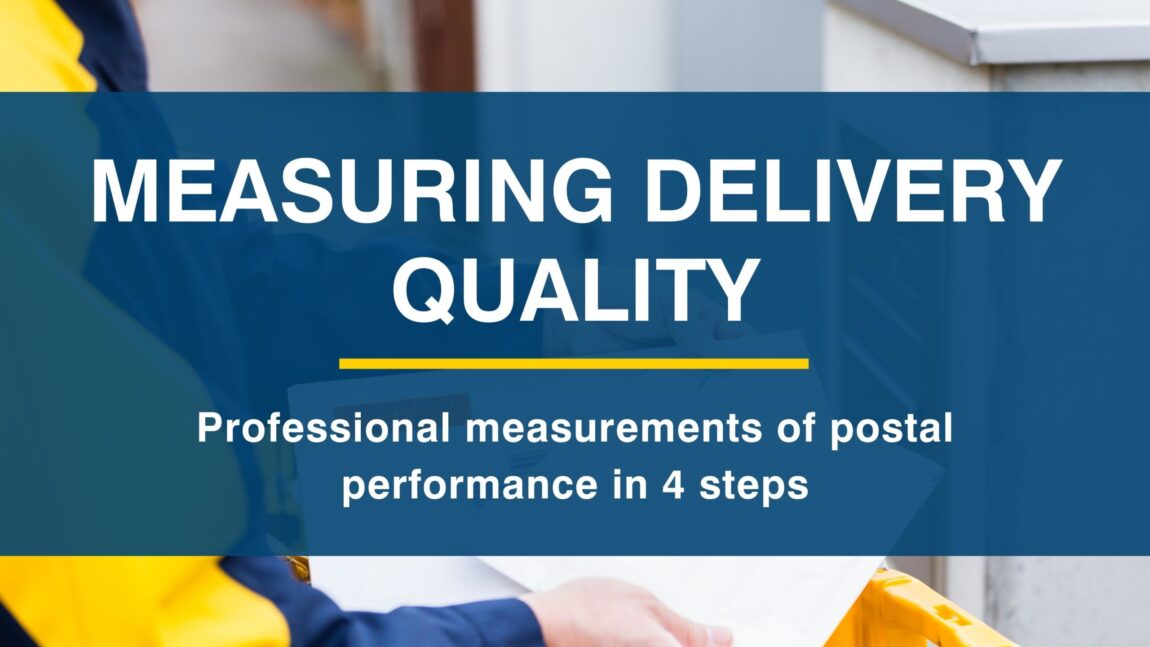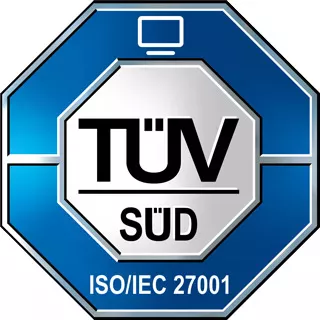Why should postal service providers regularly measure quality of service and delivery?
In today’s fast-paced world, customers demand nothing less than lightning-fast and reliable delivery. And for postal service providers, meeting these expectations is critical not only for customer satisfaction, but also to win public tenders and remain competitive. But how can a postal service provider ensure that its shipments consistently meet these high standards? The answer lies in regularly conducting transit time measurements to monitor postal performance. In this blog post, we present the proven 4-step process for measuring and improving delivery quality, from concept to final reporting.
1. Define framework conditions for the setup of a measurement system
Transit time and delivery quality measurements can be performed for any type of postal item: letters, weekly newspapers, catalogs, flyers and advertising leaflets, smaller mailbox items, and parcels. The objective of transit time measurements is to accurately assess actual delivery performance and service quality. Concrete improvements can then be derived from the knowledge gained. To this end, the first step in any measurement design is to define the specific objectives and key parameters, such as
A representative measurement design can then be created on this basis.
2. Properly prepare the postal performance measurement
Once you have determined the region, duration and frequency of your measurement, as well as the type and quantity of shipments, concrete preparations can begin. Shippers (feeders) are required for the dispatch of the test mailings. You also need reliable study participants to report back the receipt of test mailings. Postal service providers should build their panel with people from the delivery area. Alternatively, you can draw on existing study panels or add supplementary ones.
In addition to preparing and training senders and receivers, you also need to determine the planning and production rhythm of your test items, as well as the production location.
3. Choose appropriate technologies: Accurate measurements with RFID and live trackers
Measuring the quality of postal service delivery requires the accurate and documented collection of relevant data. This includes shipping confirmation from the sender, confirmation from the receiver, and final storage of the information in a database system.

RFID systems and live trackers are excellent technologies to achieve end-to-end transparency of the entire delivery chain. In particular, live tracking data provides precise information on the location and condition of shipments. RFID data, on the other hand, is invaluable for detailed insight into sub-processes at hubs and sorting centers, for example.
4. Analyzing and interpreting your performance data
Before you can evaluate the data collected from your transit time measurements, the information must be validated. Measures such as statistical corrections or the neutralization of incomplete data sets are considered proven means for this purpose. Key figures on delivery rates and transit times are important for assessing delivery quality. More detailed analyses can also be performed, including shipment condition and delivery location.
In addition to concrete, data-based information on delivery quality, personal information from recipients is very important. Regular feedback from the recipient panel makes it possible to monitor and manage service quality from the customer’s point of view. Weak points in the delivery process can be identified at an early stage. In this way, customer complaints can be prevented in a proactive manner.

Click here to enlarge the view
Providing detailed online and offline reports is a convenient and efficient way to evaluate the results. Customized postal & logistics cockpits offer many possibilities for trend analysis or benchmarking. Numerous filter functions enable detailed data analysis. The results can even be used by marketing and sales teams to support price negotiations and tenders.
Deliver the highest quality by measuring to professional standards
A structured preparation and execution of transit time measurements helps postal service providers to continuously monitor and improve their own delivery quality. Thanks to smart technologies such as RFID and live trackers, deep insights into postal performance and delivery experience are possible. The German postal operator dvs, former Postcon, has been using RFID and live tracking data for quality of service measurements for years. The official certificates of independent measurement institutes are an important prerequisite for public tenders and give the postal company a clear competitive advantage.
With many years of expertise and various services in accordance with current European standards, Spectos supports postal service providers in the complete measurement process, from planning to evaluation. The in-house Spectos Lettershop is ideal for the professional production of test items of various quantities, formats, and sizes. These test items are indistinguishable from real mailings. They are reliably delivered to the respective feed points before the start of the measurement.
Want to take your quality of service and delivery to the next level?
Look no further! At Spectos, we have specialized in providing cutting edge solutions to help postal organizations monitor and improve service quality. If you’d like to learn more about how we can help your business succeed, simply contact me or email info@spectos.com. Don’t miss out on the opportunity to revolutionize your service quality today!
News, events and much more – stay informed with our LinkedIn Channel for Postal & Logistics!








